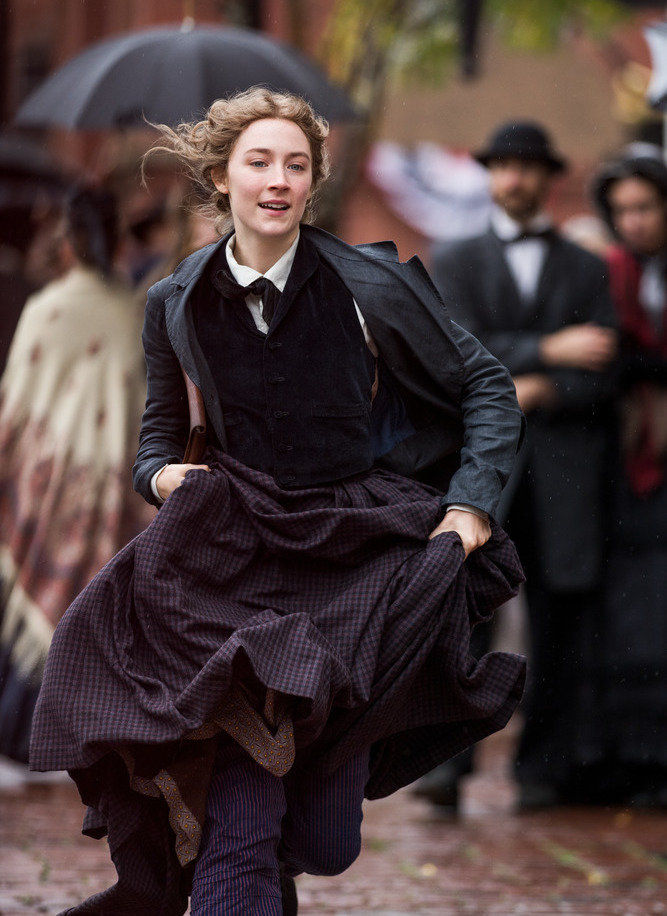A Lady in the 1860s
- isabossav

- Aug 27, 2020
- 4 min read
Updated: Dec 8, 2021
When the latest Little Women adaptation came out last year, I was lured by its depiction of domestic life, family relations, womanhood, and love in the 1860s, and got the book as soon as I had a chance.
Meg, Jo, Beth and Amy - the four March sisters, have very different personalities and aspirations in life, but they all do the best they can, each in her own way. My personal favorite is Jo. I relate to her love for books, her independent spirit, her yearn to do "something very splendid" (just like her, I am still trying to figure out what that "something very splendid" is), and I admire how she did not let herself be constrained by the social norms of her day.
"I want to do something very splendid… I don't know what, but I'm on the watch for it, and mean to astonish you all some day." Jo March

The book possesses the happy art of pleasing without effort and I amused myself following the comings and goings of the March sisters. Beyond providing entertainment, Little Women taught me about the every-day life of women in a time and place I previously knew very little about.
A Lady in the 1860s
Life in the 1800s is sometimes romanticized in our days. When I was little, I used to imagine carriages, parties, fine ladies and elegant gentlemen, but the more I read and learn about history, the more I realize how much people's (and especially women's) lives were severely constrained, and how women had to conform to a series of rules and behaviors if they did not want to seem "improper".

A Lady's Dos
A lady was supposed to dress elegantly, speak properly, attend parties, theaters, concerts, and "merry-makings of all kinds" and be graceful and refined. The fashion of the time called for dresses, gloves (apparently an absolute must for dance parties), handkerchiefs, crimped hair, and the throwing out of French phrases every now and then.
"And soon she began to imitate the manners and conversations of those about her; to put on little airs and graces, use French phrases, crimp her hair, take in her dresses, and talk about the fashions as well as she could."
"They turned [her] into a fine lady. They crimped and curled her hair, they polished her neck and arms with some fragrant powder, touched her lips with coraline salve, to make them redder… they laced her into a sky-blue dress which was so tight she could hardly breathe, and so low in the neck that [she, modest as she was] blushed at herself in the mirror. A set of silver filagree was added, bracelets, necklace, brooch and even earrings… a pair of high-heeled blue silk boots satisfied the last wish of her heart. A laced handkerchief, a plumy fan, and a bouquet in a silver holder finished her off."
A Lady's Don'ts
I was surprised to learn, mostly through the reproofs of Meg (the most stylish of the sisters) to Jo (the least preoccupied with fashion), that things as commonplace in our time as winking, shaking hands, running, whistling, or drinking champagne, were not lady-like in the 1860s.
"Winking isn't lady-like."
"And don't shake hands if you are introduced to anyone: it isn't the thing."
"You have been running, Jo; how could you? When will you stop such romping ways?"
"Jo immediately sat up, put her hands in her pockets, and began to whistle. - 'Don't, Jo; it's so boyish!'"
"No; I drank champagne, and romped, and tried to flirt and was altogether abominable."
A Lady's Limitations
"Men have to work, and women to marry for money."
Women had to get married. Unless they were exceptionally rich, there was no other viable path for them. They were not defined by who they were, but rather by the achievements and success of their husbands.
More than a century later, there are still restricting rules governing the lives of girls and women around the world. In Colombia, for example, if you are a girl, you are expected to always look a certain way since you are about 14 or 15: your make up and nails need to be done, any form of facial hair must be removed, you are expected to wear high heels to most events (I once had a fight with my parents because I refused to wear heels to a birthday party and they thought it would be disrespectful to the hosts), and being seen out and about with flip-flops is an absolute no-no.
A Lady's Conclusion
It was amusing to follow the lives and adventures of these "little women" and I am looking forward to reading the sequels. However, and even though there is still a long way to go to reach full gender equality, learning more about the expectations from and limitations of women 160 years ago reminded me how thankful I am for all those brave, strong women who came before me and fought for our rights and independence. I will never meet them, but thanks to them I can wink, shake hands, run, whistle and drink champagne, I will not have to get married if I don't want to, and I have been able to study, work and become an independent woman.








Comments